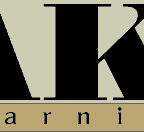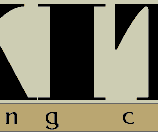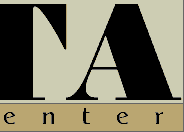 Save this page (40 kb)
Save this page (40 kb)
Has The Akita Dog Been Resurrected (Restored?)
Part 2
By Mutsuo Okada
AIKEN NO TOMO pp. 425-427, July 1998, Seibundo Shinkosha, Tokyo.
Only a handful of Japanese dogs survived the devastating war. This was a blow to the Japanese dog preservation movement, but those interested in Japanese dogs soon reemerged with the coming of peace.
The Akita dog that burst onto the Akita dog scene immediately after World War Two was Kong-go of the Dewa line (photograph 1). Kongo-go was whelped in Odate and won many awards in the Tokyo area. Kongo-go received the full support of well-respected Nippo judge, Mr. Tatsuo Nakajo (photograph 2). The popularity of the Kongo line swept like a wild fire to become the favorite dog of that era.
 Because research on the Akita dog was lacking at this time, larger and heavier Akita dogs were favored while dogs of excellent quality were often ignored and Kongo-go's strong influence spread nationwide. Tsubakigoma-go (photograph 3), Shintora-go (photograph 4) and their offsprings Goromaru-go (photograph 5), Tsukasa-go (photograph 6) and Senzan-go (photograph 7) of the Ichinoseki line soon overtook Kongo-go in popularity. The Kongo line lost its lead to the Ichinoseki line around 1953 (the twenty-eighth year of Showa). Akita dog fanciers in Japan lost interest in the Kongo line because dogs of the line often reminded on of a different breed of dog and were now considered of lower quality.
Because research on the Akita dog was lacking at this time, larger and heavier Akita dogs were favored while dogs of excellent quality were often ignored and Kongo-go's strong influence spread nationwide. Tsubakigoma-go (photograph 3), Shintora-go (photograph 4) and their offsprings Goromaru-go (photograph 5), Tsukasa-go (photograph 6) and Senzan-go (photograph 7) of the Ichinoseki line soon overtook Kongo-go in popularity. The Kongo line lost its lead to the Ichinoseki line around 1953 (the twenty-eighth year of Showa). Akita dog fanciers in Japan lost interest in the Kongo line because dogs of the line often reminded on of a different breed of dog and were now considered of lower quality.
The face of Kong-go with its resemblance to a German Shepherd was passed on to his decendants along with his loose skin and heavy body. Other popular dogs of the Dewa line around Odate were Dainidewa-go (photograph 8) and his offspring, Senko-go (photograph 9). These dogs were used extensively for breeding. They produced a large number of descendants referred to as " bata-kusai (buttery odor, slang for dogs with the western dog appearance)" with coat and colors unlike those of Japanese dogs.
As mentioned in Part 1, many preferred the large size of the Dewa line. Although Goromaru-go differed in appearance from Kongo-go , the black markings around Goromaru-go's eyes (which are not found in pinto Japanese dogs) and his pinto color were often seen in the "Shin-Akita (New Akita)" of those days, and closely resembled the St. Bernard type that had been introduced from Tosa. However, Goromaru-go had a straight back and a tight body. He also had a good temperament and passed some of these essential features of the Japanese dog to his offspring. Thus, many of Goromaru-go's outstanding offspring began to be almost deified beyond expectations by some.
As the Dewa line went into decline, closely related lines of the Ichinoseki line also gained in popularity. Breeding services of Tamakumo-go of the Ichinoseki line (photograph 10), a dog two years younger than Goromaru-go , was also in demand. Thus, these two dogs of the related Ichinoseki lines were widely use as recognized foundation dogs. Both dogs produced offspring with white coats. Some began to regard these white dos as restored classical Japanese dogs because white coats were not seen in Akita dogs that were crossbred with dog breeds from overseas . Mr. Katsusuke Ishihara of Akikyo (Akitainu Kyokai) (see photograph in Part 1) used Tamakumo-go and Goromaru-go as building blocks on the path to restoration at that time. One could say that this was a wise move by Mr. Ishihara.
Coat colors of the original Japanese dog type with two layers, the coarse exterior coat and the cotton-like fine undercoat, were greatly emphasized. Undesirable coats without the desirable urajiro (white shadings on the sides of the muzzle and cheeks, the underside of the jaw, neck, chest, abdomen, forelegs to the elbow joint, rear legs to the knee joint and underside of the tail seen in Japanese type or the primitive type dogs) and short coats soon became a rarity.
However, things were allowed to get out of hand. The pinto became very popular with Goromaru-go and many dogs of this type remain popular overseas today. Also, the Kongo line and its coat remains common in the American Akita . In Japan , such dogs disappeared many years ago.
Akiho and Akikyo centered their attraction around Goromaru-go and went through a period in which pintos descended from Goromaru-go won many high awards. In spite of similar coat patterns, as seen in the photographs, dogs shown in the two dog organizations differed somewhat. Akikyo preferred dogs with a tighter body and a firm temperament., while Akiho put its emphasis on a larger dog. Akiho centered on Muchi-go (photograph 11), which reminded one of the Odate fighting dog. On the other hand, Akikyo pursued the pure Japanese dog type with a stricter exercise program to produce dogs with a tighter body.
Bloodlines of two prominent foundation dogs, Goromaru-go and Tamakumo-go were intermixed widely when enthusiasm for producing the ideal dog by some of the well-know dog fanciers was at its peak. Akiho had more than 10,000 members while Akikyo had 2,000 members during this golden age.
At this time, several dog lines other than the foregoing two great foundation dogs also made significant contributions toward the restoration of the Akita dog. These were dogs of the Taihei line from Senboku-gun in Akita and a few from the prewar Akita Nikkei line that survive the war. Both bloodlines had beautiful red coats with no black mask and a high degree of purity. Without the addition of these two bloodlines, I believe that the rapid progress toward purification through Goromaru-go and Tamakumo-go would not have occurred . Many famous dogs and other excellent foundation dogs were produced by bitches from these two bloodlines.
Large Japanese dogs with the soshitu (character, temperament) with a height of 2shaku 1 sun (63.6 cm / 23.9 inches) or more began to be produced. I have often wondered whether or not when one refers to the fukkatsu (revival) and yomigaeri (restoration, resurrection) as in Part 1, are Akita dogs that are 2 shaku (60.6 cm / 23.9 inches) or less are acceptable? Unfortunately in the case of the Akita dog, size was increased by using mixed breed dogs. However, inspite of this, the Akita dog of today is not considered inferior to any of the other Japanese dogs of today. In other words, more effort was required to produce the distinctive classical large Japanese dog we see today.
Date-no-hana-go is said to be the ancestor of the Taihei line . However, Mr. Ishihara along with scholars from Odate and Mr. Ishida (who owned Date-no-hana-go) all said that during the war, that no pedigree for Date-no-hana-go was available. Differing opinions on this dog's pedigree that prevailed were discussed in my book, Keito Tokuhon, Akitainu (Pedigrees of the Akita Dog). However, my recent acquisition of old documents revealed a clerical error in one of the characters dispelling any questions on Date-no-hana-go's pedigree. Date-no-hana-go's sire was Datekoshi-go (sire: Tora-go, dam: Rokka-go) and the dam was Aka-go (sire: Kanazawa-aka-go, dam: Goma-go), and the breeder was Mr. Kikichiro Fusaya. I believe that the foregoing information on Date-no-hana-go is about 99% correct.
The postwar revival of the Akita Nikkei line, as mentioned in Part 1, began with two dogs , Shiranami-go and Akaishime-go (photograph 12) that survived the war. The pedigrees of Shiranami-go and Akaishime-go can be traced back to their ancestor, Oyajiro-go (see photograph in Part 1). As foundation dogs, they contributed much toward the restoration of the Akita dog. Shiranami-go and Akaishimi-go produced Akaishihime-go (Photograph 13), which produced Makome-go (photograph 14), which produced Daiun-go (photograph 15), which produced Daiunme-go (photograph 16). Shiranami-go and Akaishime-go also produced Daisan-shiranami-go (photograph 17), which produced Hokutomaru-go (photograph 18), which produced Hoppohime-go (photograph 19), which produced Kita-no-o-go (photograph 20) and on to the dogs of today. Daiunme-go's grandchildren, Tetsuyuki-go (photograph 21) and Kumomaru-go (photograph 22) along with Shin-no-o-go (photograph 23), the grandson of Kita-no-o-go were rated highly and used nationwide as foundation dogs and produced some excellent dogs. During this period, Akita dogs that resulted from the commingling of these bloodlines were of high purity. Also during this period, both Akiho and Akikyo enjoyed a very close relationship and many Akita dog fanciers came to believe that an ideal situation had been established.
However, overheated enthusiasm from successive wins at dogs shows can become deeply rooted and lead to problems. Rumors began to circulate about a triangle between certain Akiho breeders, show people and judges. This led to increasing altercations at dog shows and often led to violence. This resulted in the banning of Akiho headquarters shows for a time by the Agency for Cultural Affairs. In the past, only four to five Meiyoshos were awarded yearly. When forty or more Meiyoshos began to be awarded yearly, confusion began to reign. Discussion on revising the system led to heated debates. Such events were covered repeatedly by the news media with the headline, "Money Talks With Akita Dog Winners." This was followed by massive dismissals of judges and resignations of Akiho officers who were faced with huge fines. Akiho's membership also decreased markedly as a result and the public began to question the records of successive winners.
I was even told by fellow alumni to "wash my hands and get out of this bad situation." An old proverb states that "Inu wa hito ga tsukuru (Dogs are constructed by man)". Many of the angry or disappointed began to protest that the Akita dog was being ruined by those who were undoing some of the accomplishments of our predecessors, whose great efforts had made possible such progress in the past.
 The Akita dog has indeed taken some steps backward. Some examples are the increasing appearances of soft downy coat, inadequate height, proportionately short muzzle that accompanies a large head (left), low ears (photograph 25), a round forehead that is often referred to that of Fukusuke (the big-headed dwarf) (photograph 26 ). Some have even jested that this may be due to mixing with the Chow Chow. These problems should be corrected now.
The Akita dog has indeed taken some steps backward. Some examples are the increasing appearances of soft downy coat, inadequate height, proportionately short muzzle that accompanies a large head (left), low ears (photograph 25), a round forehead that is often referred to that of Fukusuke (the big-headed dwarf) (photograph 26 ). Some have even jested that this may be due to mixing with the Chow Chow. These problems should be corrected now.
In breeding our dogs, we need to be aware of our dog's faults. We should carefully note the correct muzzles and foreheads that were seen in some of the famous dogs of about a decade ago and follow a true course, as if one were looking at the North Star. I have also heard that some greedy people are breeding dogs with longer hair and inadequate height. These could lead to a deterioration of the dog breed.
However, not all of the Akita dogs of today have deteriorated. We must note and correct any faults and produce a true large Japanese dog that can be shown as an "ideal" example of the breed. "Dogs are constructed by man."
[ Correction: In Part 1 the photo with Tora-go was one of the employees of Mr. Ichinoseki. ]
Note: Translated and presented by Tatsuo Kimura with permission from Mutuso Okada. Edited by Namiko and Rick Greatting . Bold print for emphasis was added by the translator. Additional photographs were obtained from other sources.
Akita World, September/October 1999









